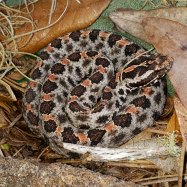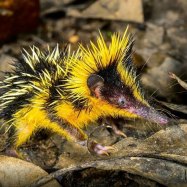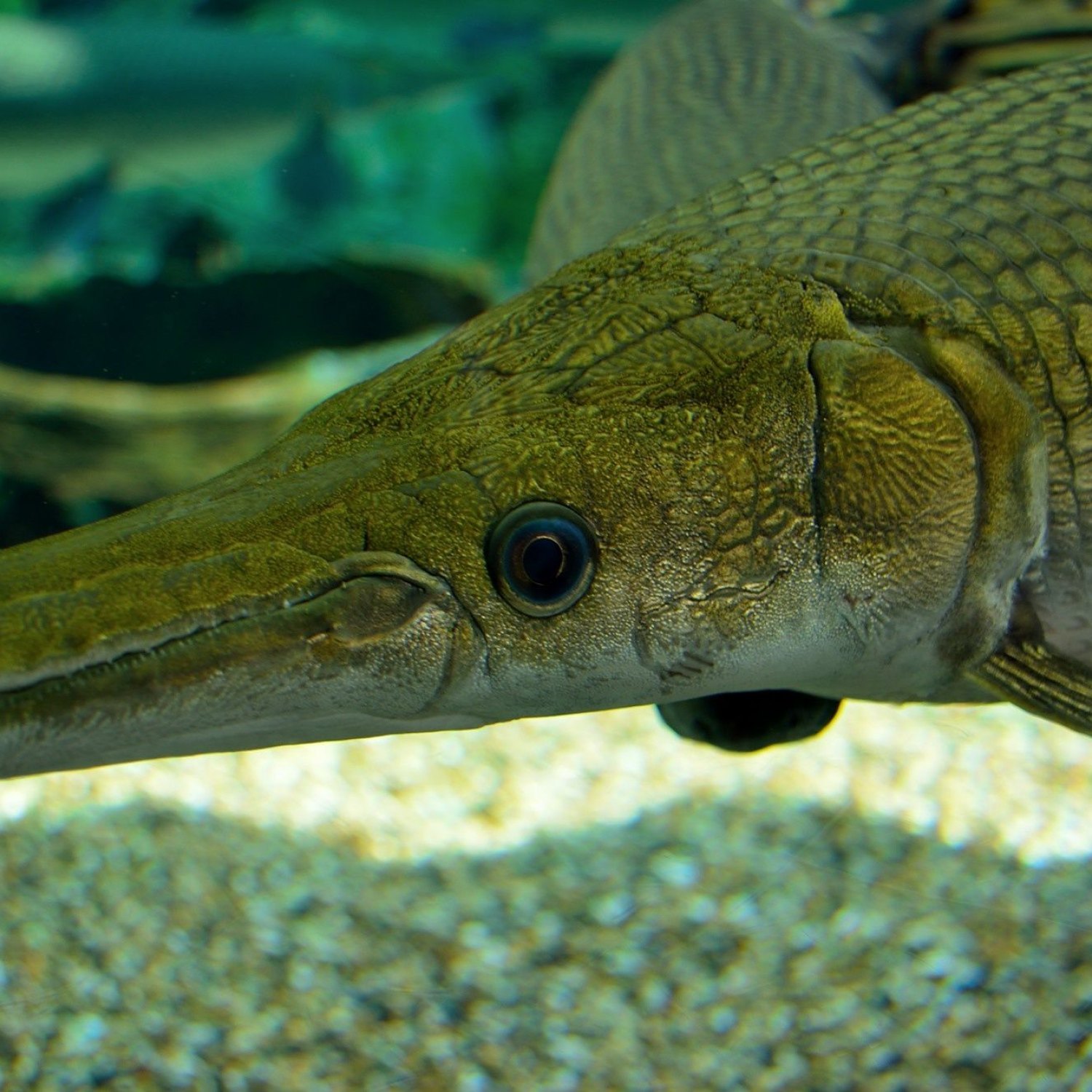
Gar
Up to 1.8 meters (6 feet)
The gar, also known as the alligator fish, can grow up to 1.8 meters in length and is often found in rivers, lakes, and marshes. This elongated and cylindrical-shaped fish belongs to the Lepisosteidae family and can be easily identified by its signature long snout and sharp teeth. Keep an eye out for the gar during your next fishing trip! #alligatorfish #fishfacts
Animal Details Summary:
Common Name: Gar
Kingdom: Animalia
Habitat: Freshwater
American Alligator Gar: The Long-Lived Monster of North and Central America
Have you ever heard of an animal that looks like a mix between a dinosaur and a fish? Well, that would perfectly describe the majestic creature known as the American alligator gar, or simply, gar. These fascinating animals have a long and rich history, roaming the freshwater habitats of North and Central America for millions of years. In this article, we will delve into the world of gars, exploring their physical characteristics, behavior, and significance in their ecosystems.The Basics: What Are Gars?
Before we dive into the world of gars, let's first understand what they are Gar. Scientifically known as Lepisosteus, gars are a group of freshwater fish belonging to the family Lepisosteidae. They are part of the larger group of fishes called actinopterygii, known as ray-finned fishes. Gars are common in North and Central America, with various species found in the United States, Canada, and Mexico.Physical Characteristics
Gars are easily recognizable due to their distinct appearance. With an elongated and cylindrical body, they resemble a cross between a fish and a crocodile. This unique appearance is what makes them exceptional and well-adapted predators in their environments.On average, gars can reach up to 1.8 meters (6 feet) in length, with some species growing even longer. This makes them one of the largest freshwater fishes in North America Green Heron. Their body shape is ideal for stealthy movements in the water, allowing them to quickly dart towards their prey. They have sharp teeth and powerful jaws, making them efficient and successful carnivores.
Habitat and Distribution
Gars are found in freshwater environments, primarily in rivers, lakes, and marshes. They are capable of adapting to a wide range of habitats, from slow-moving rivers to shallow, stagnant waterbodies. This makes them a ubiquitous species, present in different regions throughout North and Central America.The geographical distribution of gars includes the United States, Canada, and Mexico. In the United States, they can be found in various states, from the Mississippi River basin to the Gulf of Mexico. In Canada, gars are predominantly found in the southern regions, while in Mexico, they are widely distributed throughout the country.
Feeding Behavior
Gars are known as formidable predators, with a diet consisting mainly of other fishes, crustaceans, and even small mammals. They have small sensors on their snout, making it easier for them to detect prey in murky waters. Once a potential meal is detected, gars use their sharp teeth and powerful jaws to quickly ambush and grab their unsuspecting prey.Interestingly, gars have also been observed exhibiting cooperative hunting behavior. In some cases, they have been seen hunting in pairs, working together to capture larger prey. This behavior showcases their intelligence and adaptability, making them even more fascinating creatures.
Adaptations for Survival
Gars have been evolving for millions of years, and their adaptations have made them incredibly successful in their environments. Their long, cylindrical body allows for swift movements in the water, making it easier for them to chase and catch their prey. Additionally, their scales are tough and thick, providing protection against predators and other external threats.Another remarkable adaptation of gars is their ability to breathe air. Unlike most fish species that solely rely on gills for respiration, gars have an air bladder that allows them to gulp air from the surface. This adaptation is particularly useful in stagnant or low-oxygenated waters, giving them an advantage over other fishes.
Economic and Ecological Significance
Aside from their fascinating biology and behavior, gars also hold significant economic and ecological value. In some parts of North America, they are considered a delicacy and are highly sought after by fishermen. They are also used in traditional medicine as their scales and bony plates are believed to have healing properties.From an ecological standpoint, gars play an essential role in maintaining the balance of freshwater ecosystems. As apex predators, they keep the populations of their prey in check, preventing any potential overpopulation that could lead to ecological disturbances.
Challenges and Conservation Efforts
Despite their importance in their ecosystems, gars are currently facing several challenges due to human activities. Habitat destruction, water pollution, and overfishing have all contributed to declining populations of gars in some regions. In some areas, gars are also caught and killed due to misconceptions about their threat to humans.To address these issues, there have been various conservation efforts to protect and restore gars' populations. These include monitoring and regulating fishing activities, as well as restoring and protecting their habitats. Public education and awareness programs are also crucial in dispelling misconceptions about gars and their role in their ecosystems.
In Conclusion
In summary, gars are truly fascinating creatures that have roamed the freshwater habitats of North and Central America for millions of years. With their unique physical characteristics, remarkable adaptations, and significant ecological value, they are truly one of the most captivating species on our planet. It is our responsibility to ensure their survival by protecting their habitats and promoting their conservation. Let us continue to admire and appreciate these ancient monsters of our waterways – the American alligator gar.

Gar
Animal Details Gar - Scientific Name: Lepisosteus
- Category: Animals G
- Scientific Name: Lepisosteus
- Common Name: Gar
- Kingdom: Animalia
- Phylum: Chordata
- Class: Actinopterygii
- Order: Lepisosteiformes
- Family: Lepisosteidae
- Habitat: Freshwater
- Feeding Method: Carnivorous
- Geographical Distribution: North and Central America
- Country of Origin: United States, Canada, Mexico
- Location: Rivers, lakes, and marshes
- Animal Coloration: Varies, but commonly brown or green with spots or stripes
- Body Shape: Elongated and cylindrical
- Length: Up to 1.8 meters (6 feet)
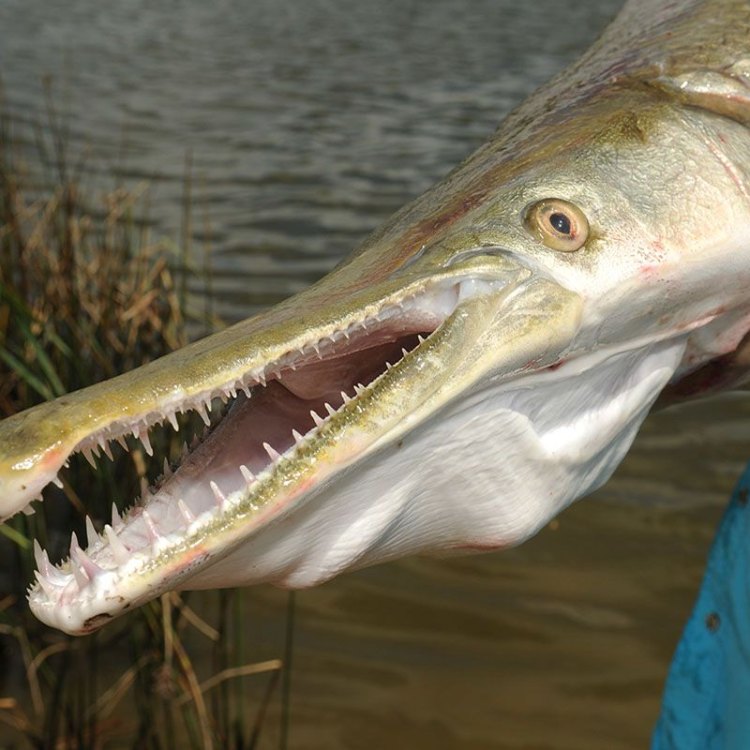
Gar
- Adult Size: 1.2 - 1.8 meters (3.9 - 6 feet)
- Average Lifespan: 10 - 20 years
- Reproduction: Sexual
- Reproductive Behavior: External fertilization
- Sound or Call: Grunt-like sound
- Migration Pattern: Some species migrate to spawn
- Social Groups: Solitary
- Behavior: Predatory, ambushes prey
- Threats: Habitat loss, overfishing
- Conservation Status: Least Concern
- Impact on Ecosystem: Top predator, helps maintain balance
- Human Use: Sport fishing
- Distinctive Features: Long snout, sharp teeth, armored scales
- Interesting Facts: Gars can breathe air and survive in low-oxygen waters
- Predator: Humans, larger fish
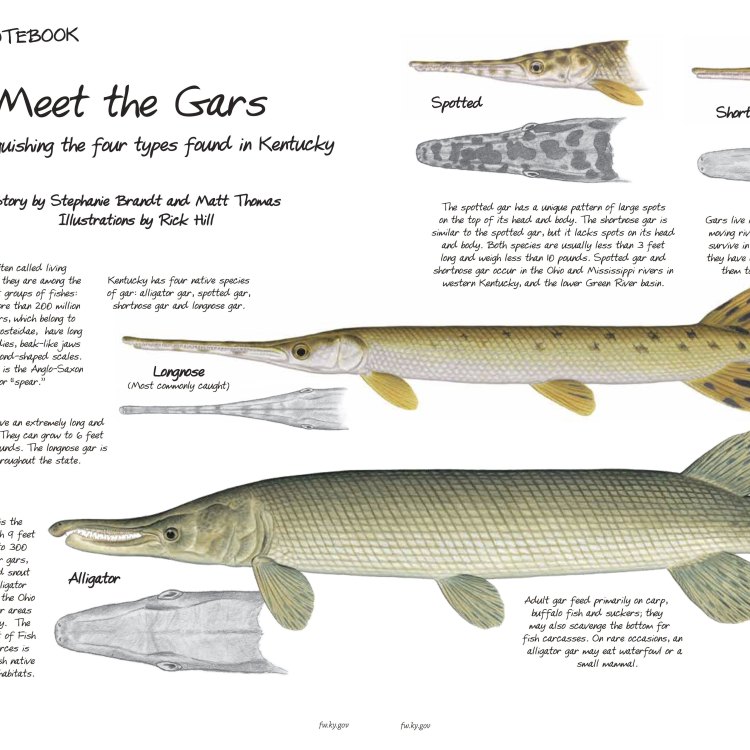
Lepisosteus
The Mighty Gar: A Fascinating Predator with Unique Features
In the vast and diverse world of aquatic animals, one species stands out as a mighty predator with unique features - the Gar. Also known as the Garfish or the Garpike, this ancient fish species has been around for millions of years, with fossils dating back to the Jurassic period. Their impressive size, predatory behavior, and distinctive features make them a fascinating and important part of many freshwater ecosystems.The Gar belongs to the family Lepisosteidae, which translates to "bony scales" in Greek PeaceOfAnimals.Com. This name is fitting, as Garfish are characterized by their long, narrow snouts, sharp teeth, and armor-like scales. They have a prehistoric appearance, reminiscent of dinosaurs, which makes them a popular attraction in aquariums and zoos.
Adult Gars can reach a length of 1.2 to 1.8 meters (3.9 to 6 feet) and can weigh up to 45 kilograms (100 pounds). They have an elongated body with a cylindrical shape, usually dark green or brown in color, with spots or blotches on their sides. These colors act as camouflage, allowing them to blend into their surroundings and ambush their prey. The lifespan of a Gar ranges from 10 to 20 years in the wild Gypsy Moth Caterpillar.
One of the most interesting facts about Gars is their ability to breathe air. They have a swim bladder, a sac-like organ that helps them control buoyancy, which can also function as a primitive lung. This allows them to take in oxygen from the air and survive in low-oxygen waters, making them adaptable to a wide range of habitats.
Gars primarily inhabit freshwater bodies, such as rivers, lakes, and swamps, in North and Central America. They are found in the Mississippi River basin, as well as the Great Lakes region and the Gulf of Mexico. Some species of Gar have also been introduced to parts of Europe and Asia, where they are considered invasive.
These ancient fish have unique reproductive behavior, with external fertilization. During the breeding season, males will construct a nest by pushing and arranging vegetation into a circular shape on the bottom of the water body. Females will then lay their eggs in the nest, and the male will fertilize them. Once the eggs hatch, the male will protect the fry until they are able to fend for themselves.
Gars are known for their distinctive grunt-like sound, which can be heard when they are caught by fishermen or when they breach the surface of the water. This sound is produced by their gas bladder, and it can serve as a form of communication between individuals.
Migration is also a significant aspect of Gar behavior. While most species are solitary, there are some that migrate to spawn. For example, Alligator Gars, found in the southern United States, will congregate in large groups in specific areas to breed. This behavior also makes them an easy target for overfishing during spawning seasons.
Gars are long-lived, slow-growing fish, which makes them susceptible to overfishing and habitat loss. They are considered a delicacy in some regions, and their highly valued scales are used in traditional medicine. As a result, they are facing increasing threats from commercial and recreational fishing activities. Their habitat is also under pressure from human development and pollution.
The conservation status of Gars varies depending on the species and location. Some are listed as "Least Concern" on the IUCN Red List of Threatened Species, while others, such as the Cuban Gar, are considered "Endangered." However, the decreasing population numbers of Gars worldwide highlight the need for effective conservation efforts.
The Gar's importance in freshwater ecosystems cannot be overstated. As top predators, they play a crucial role in maintaining the balance of these delicate ecosystems. They feed on a variety of smaller fish and invertebrates, and their predatory behavior helps control their populations, preventing them from becoming too dominant.
Without Gars, there would be a ripple effect on the entire ecosystem, leading to imbalances that would impact the populations of other species. For example, overpopulation of prey species could lead to overgrazing of vegetation, leading to changes in water quality and decreasing the availability of food for other species. Therefore, preserving Gars is crucial for the health and sustainability of the ecosystems in which they live.
Apart from their ecological importance, Gars also have a significant impact on human activities. They are highly sought-after as sport fish, known for their strength and fighting abilities. Many fishermen are dedicated to catching a trophy-sized Gar, making them a popular target for recreational fishing. However, fishing regulations and conservation efforts are necessary to ensure the sustainable use of Gars for sport fishing.
In addition to their role in recreational fishing, Gars also have cultural significance. They are considered sacred by some Native American tribes, who include them in their traditional ceremonies and use their scales and bones for various purposes. This highlights the deep-rooted connection between humans and these ancient fish throughout history.
The Gar is also an important species for scientific research. Their unique features and ability to survive in diverse environments make them valuable for studying evolution, adaptation, and the impacts of pollution on aquatic animals. Studying Gars can also provide insights into the health of their surrounding ecosystems.
In conclusion, the mighty Gar is a fascinating predator with unique features that make them stand out in the vast world of aquatic animals. From their prehistoric appearance and distinctive sound to their ability to breathe air and play a crucial role in maintaining the balance of freshwater ecosystems, they are a remarkable species worthy of our admiration and protection.
However, the threats they face from habitat loss and overfishing cannot be ignored. It is our responsibility to ensure the conservation of Gars for future generations to appreciate and benefit from their presence. Governments, conservation organizations, and individuals must work together to protect these ancient creatures and their habitats, promoting sustainable fishing practices and raising awareness about their importance in the natural world. Only then can we truly appreciate the unique features and significance of the mighty Gar.
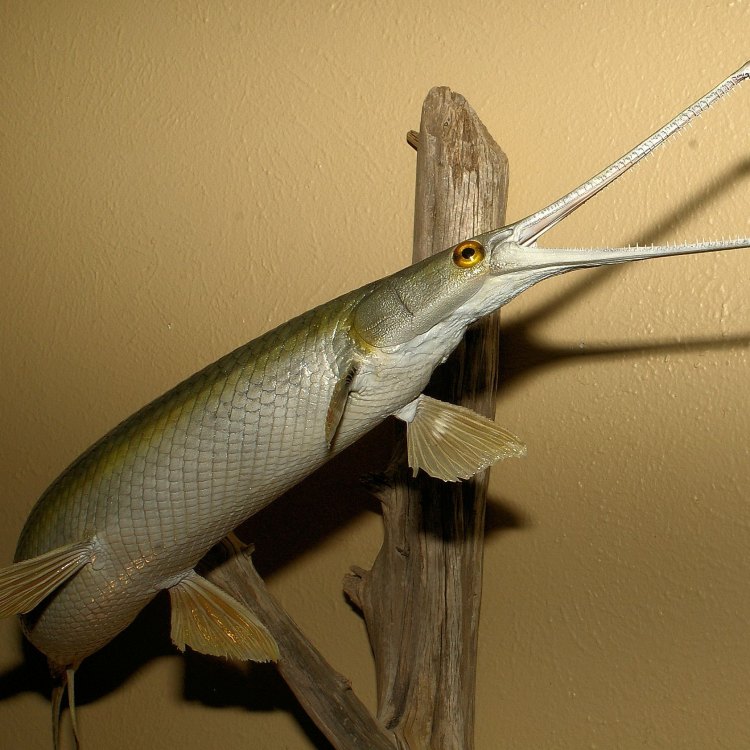
American Alligator Gar: The Long-Lived Monster of North and Central America
Disclaimer: The content provided is for informational purposes only. We cannot guarantee the accuracy of the information on this page 100%. All information provided here may change without prior notice.

